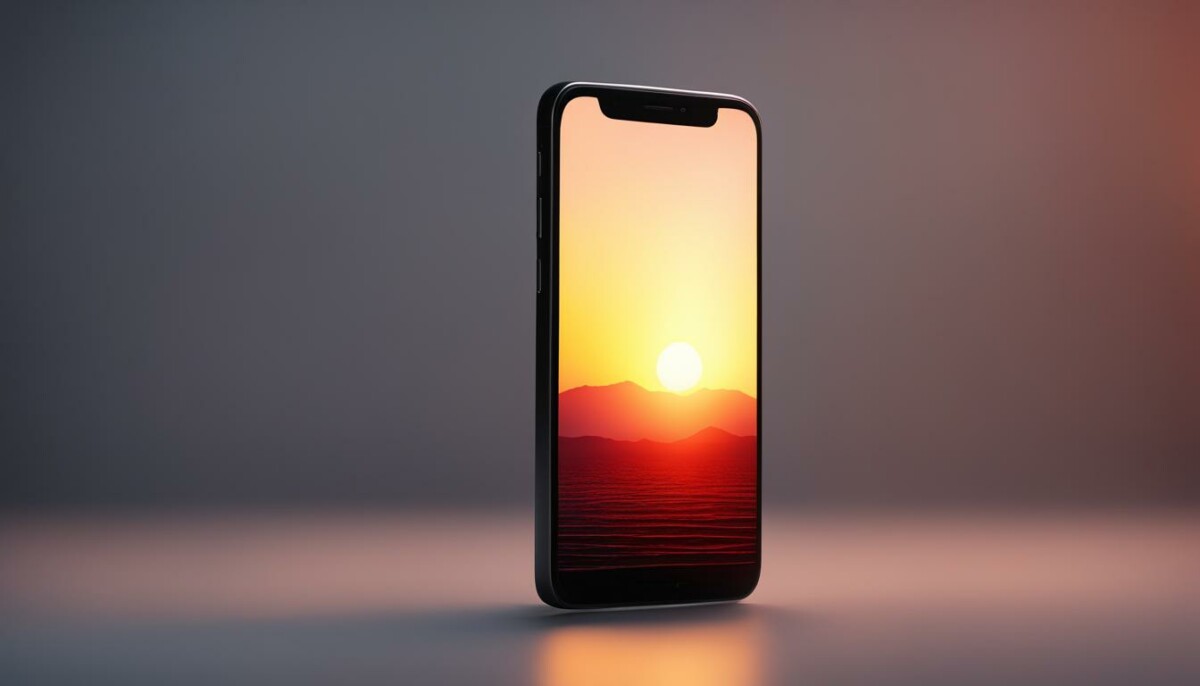Last Updated on 5 months by Francis
With the advancement of technology, we have started witnessing a lot of features on our phones that we would have never thought of before. One such feature is the Infrared Port, also known as IR port. The IR port makes your phone much more than just a calling and messaging device. It allows your phone to communicate with other devices through infrared technology, enabling a seamless connection to a wide range of devices that traditional wireless technologies have limited access to.
So, what is an infrared port on a phone, and how can it enhance phone functionality? In this section, we will take an in-depth look at the infrared port on your phone and understand its uses in enhancing phone functionality.
Contents
Key Takeaways
- An infrared port on a phone enables communication with other devices through infrared technology.
- It offers a seamless connection to a wide range of devices that traditional wireless technologies have limited access to.
- Understanding the capabilities of the infrared port can help you make the most of your phone’s functionality.
- Infrared technology can enhance the user experience by providing unique features that other wireless technologies cannot offer.
- An infrared port on a phone is a valuable addition to any smartphone, and its possibilities are virtually limitless.
How Does an Infrared Port Work

Now that we know what an infrared port is on a phone, let’s take a closer look at how it works to enable communication and data transfer. Infrared communication on smartphones operates on the principle of line-of-sight communication through infrared light.
When two devices equipped with infrared ports come into proximity, they can establish communication by transmitting and receiving coded pulses of infrared light. This technology allows for the wireless transfer of data, including images, audio, and information such as contacts and text messages.
Unlike Bluetooth, which uses radio waves to transmit data, infrared communication is limited to short-range communication within a few feet. However, this also makes it a more secure option as the signal cannot easily be intercepted by other devices outside the range or line of sight.
| Infrared Communication | Bluetooth Communication |
|---|---|
| Line-of-sight communication | Radio waves communication |
| Short-range communication within a few feet | Long-range communication up to 30 feet |
| More secure option | Susceptible to interference and hacking |
Overall, an infrared port on a phone offers a unique and complementary option for wireless communication and data transfer. While its range may be limited compared to other wireless technologies, its security and versatility make it a valuable addition to any smartphone device.
The Benefits of an Infrared Port on a Phone
While Bluetooth technology has become the go-to wireless standard for modern devices, infrared ports on phones still have their unique advantages.
Better Battery Life: Unlike Bluetooth, infrared technology requires significantly less power to operate. This means that using the infrared port on your phone to transfer data or control devices will have a minimal impact on your battery life, allowing you to use your phone for longer periods without a recharge.
Secure Connection: Infrared communication is much more secure than Bluetooth. Since infrared signals require a direct line of sight between devices to function, the risk of unauthorized access is reduced. This makes infrared ideal for transferring sensitive data, such as bank account details or personal information.
Wide Range of Uses: While Bluetooth is primarily used for audio streaming, infrared can be used for a variety of purposes. From controlling home appliances to transferring files, the possibilities are endless.
Cost-Effective: Infrared technology is significantly cheaper than Bluetooth, making it an attractive option for manufacturers looking to reduce costs. This cost-effectiveness is often passed on to the end-user, making phones with infrared ports more affordable than their Bluetooth-enabled counterparts.
Infrared Port vs Bluetooth: A Comparison
While both infrared ports and Bluetooth offer wireless connectivity, each technology has its own unique strengths and weaknesses. Here’s how they compare:
| Feature | Infrared Port | Bluetooth |
|---|---|---|
| Range | Short-range (up to 1 meter) | Long-range (up to 100 meters) |
| Power Consumption | Low | High |
| Data Transfer Speed | Slow (up to 4 Mbps) | Fast (up to 24 Mbps) |
| Security | High (direct line of sight required) | Low (prone to interference and hacking) |
| Cost | Low | High |
As you can see, infrared ports are ideal when high security and low power consumption are key concerns. Bluetooth, on the other hand, is ideal for long-range communication and fast data transfer speeds.
Understanding Infrared Technology in Phones
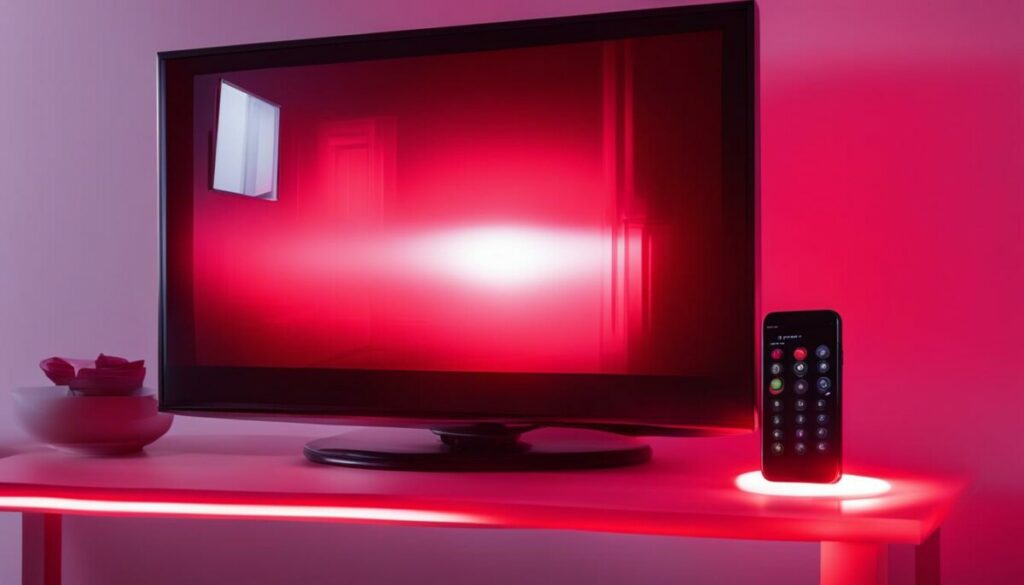
Modern smartphones are equipped with a plethora of features that make them versatile devices for communication, entertainment, and productivity. One such technology that has become increasingly popular in recent years is infrared technology.
So, what is infrared technology in phones exactly? Infrared technology is a wireless communication technology that enables devices to send and receive data using infrared light waves. It is a fast, secure, and reliable way to transfer data over short distances and has a range of applications that enhance smartphone functionality.
Infrared technology is commonly used in phones to allow for remote controlling of other devices, such as televisions, air conditioners, and various other home appliances. This is achieved through the use of an infrared port, which is a small sensor on the phone that emits infrared light waves in response to user input. The light waves are then received by the device being controlled, allowing the user to manipulate its settings remotely.
Another common use of infrared technology in phones is for data transfer. Infrared communication can transfer data at speeds of up to 4 Mbps, making it an efficient way to send and receive files between devices. While Bluetooth and Wi-Fi are more commonly used for data transfer today, infrared technology still has its advantages in certain scenarios.
One of the key benefits of infrared technology in phones is its low power consumption. Infrared communication requires minimal power to transmit data, making it an energy-efficient way to transfer information. This is especially useful for IoT devices, which often have limited battery life and need to conserve power to operate effectively.
Overall, infrared technology in phones has come a long way since its early adoption. Its ability to improve device functionality and enhance user experiences has made it a valuable addition to modern smartphones. As technology continues to evolve, it will be exciting to see how infrared technology will play a role in the future of smartphone communication.
Exploring the Uses of an Infrared Port on a Phone
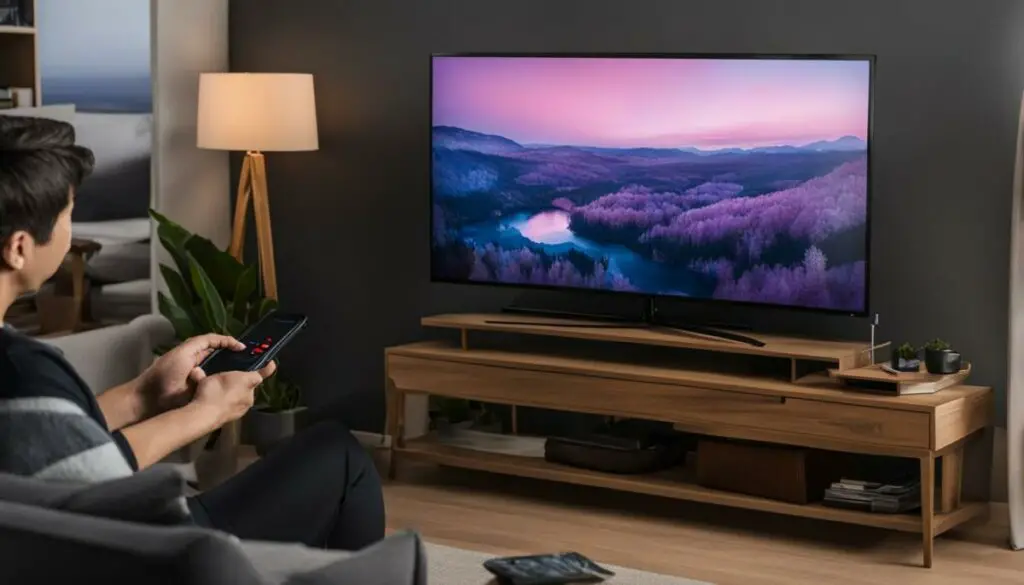
Phones with infrared ports are capable of more than most users realize. Here are just a few practical uses for this handy feature:
| Function | Explanation |
|---|---|
| Controlling Home Appliances | With the right app or built-in functionality, you can use your phone as a remote control for your TV, air conditioner, or other home appliances that have infrared sensors. |
| Transferring Files | Infrared ports can transfer files rapidly even when there is no wifi or cellular data available. This method of transferring data can also be more secure than other methods, as infrared signals cannot be intercepted as easily as wifi or Bluetooth. |
| Printing | Many printers have built-in infrared sensors that allow them to connect to phones without the need for cables or wifi. This feature is especially helpful for printing documents while on the go or in areas without access to wifi. |
| Sharing Contacts | Phones with infrared ports can easily share contact information with other devices that have the same sensor. This feature is particularly useful at networking events or when meeting new people. |
| Accessing Electronic Devices | Electronic devices like smartwatches and smart home devices can be controlled with an infrared port on a phone. This feature can make it much easier to access and control devices simultaneously from one central location. |
As you can see, the uses of an infrared port on a phone are varied and can make life much easier for users.
Infrared Port vs Bluetooth: A Comparison
When it comes to wireless communication technologies, two of the most commonly used options are infrared and Bluetooth. While both options offer their unique benefits, there are fundamental differences between the two that can influence how effectively they are used in different scenarios. Infrared port vs Bluetooth is a common topic of discussion among tech enthusiasts, and in this section, we will delve deeper into the comparison.
The Technology Behind Infrared and Bluetooth
One of the main differences between infrared and Bluetooth is the technology they use to facilitate communication. Infrared communication relies on the use of light waves, which are invisible to the naked eye, to transmit data between devices. In contrast, Bluetooth makes use of radio waves to establish a connection and transmit data.
Because infrared communication operates through light waves, it requires a clear line of sight between the devices involved. This means that you need to physically point the devices at each other to establish a connection and transfer data. In contrast, Bluetooth can establish a connection even if the devices are not in the line of sight of each other, as long as they are within a certain range.
Range and Speed
Another significant difference between infrared and Bluetooth is their range and speed. Infrared communication is generally limited to a range of a few feet, and data transfer can be relatively slow compared to other wireless technologies. Bluetooth, on the other hand, can transmit data over a distance of up to 30 feet and is generally much faster than infrared.
Applications of Infrared and Bluetooth
When it comes to practical applications, both infrared and Bluetooth have their unique benefits. Infrared is commonly used for controlling home appliances, such as TVs, DVD players, and air conditioners, as it can send commands to compatible devices without the need for additional hardware.
Bluetooth, on the other hand, is widely used for data transfer between devices, such as transferring files between phones or connecting wireless headphones to a phone or laptop. Additionally, Bluetooth is often used for establishing connections between devices, such as connecting a phone to a car’s audio system.
Infrared Port vs Wi-Fi: How Do They Differ

While both infrared and Wi-Fi are wireless technologies, they differ significantly in terms of their capabilities and usage. Infrared technology operates at a much shorter range than Wi-Fi, with a typical range of around 1 meter. In contrast, Wi-Fi can transmit data over much larger distances, often spanning an entire house or building.
Another significant difference between infrared and Wi-Fi is the way they operate. Infrared requires a direct line of sight between the transmitter and receiver, meaning there can be no obstructions blocking the path of the infrared signal. This can make it challenging to use in certain situations, such as when controlling devices in a cluttered or crowded environment.
Wi-Fi, on the other hand, uses radio waves to transmit data, allowing it to penetrate walls and other obstacles. This makes it a much more versatile and flexible technology, suitable for a wide range of applications.
| Infrared | Wi-Fi | |
|---|---|---|
| Range | Shorter, typically 1 meter | Longer, spans an entire house or building |
| Line of Sight | Requires a direct line of sight | Operates through walls and other obstructions |
| Usage | Best for short-range, direct communication | Flexible, suitable for a wide range of applications |
Despite these differences, both infrared and Wi-Fi have their unique strengths and applications. Infrared is ideal for short-range communication and can be used to transfer data quickly and securely between devices. Wi-Fi, on the other hand, is best for longer-range applications and can provide fast and reliable internet connectivity to a wide range of devices.
Overall, the choice between infrared and Wi-Fi depends on the specific needs of the user. Those looking for quick and direct communication may find infrared to be the better option, while those needing seamless connectivity over a large area will likely prefer Wi-Fi.
The Evolution of Infrared Communication on Smartphones
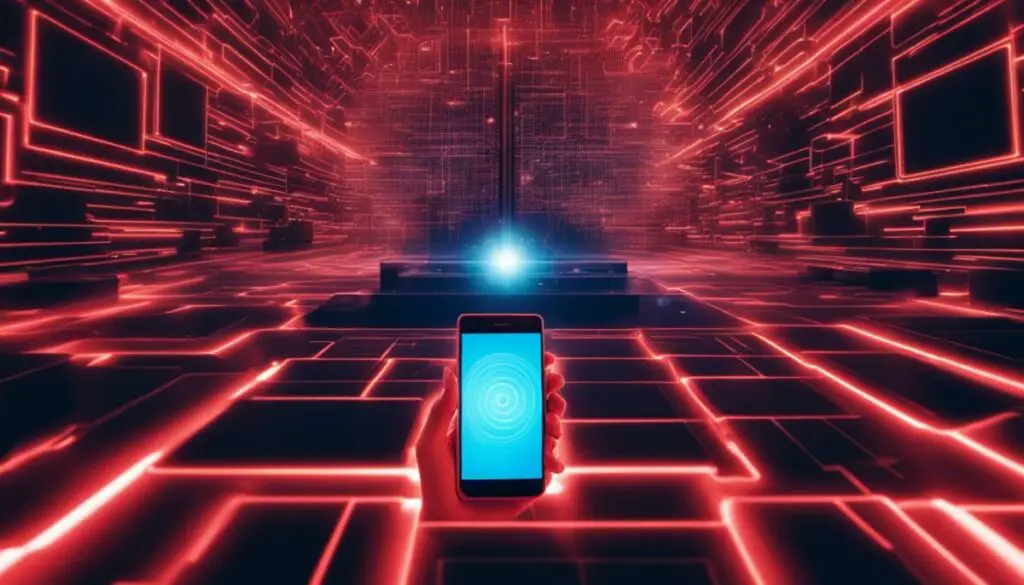
Since its inception, infrared communication has been an integral part of smartphone technology. Infrared technology has come a long way since the early days of mobile phones and is now a reliable means of communication and data transfer.
With the advent of smartphones, infrared communication has evolved to become a more sophisticated and versatile tool, capable of handling a wide range of tasks. Infrared technology is now used for everything from sharing files between devices to controlling home automation systems and even monitoring health.
To understand the evolution of infrared communication on smartphones, we need to look back at its early days. The first mobile phones with infrared communication capabilities were introduced in the late 1990s but faced several challenges. One of the key issues was the limited range of infrared signals, which meant that devices had to be very close to each other for communication to occur.
Over time, however, infrared communications technology has improved significantly, and the range of signals has increased. Infrared signals can now travel up to 30 feet, making communication between devices much easier. This has opened up new possibilities for using infrared communication on smartphones, including the ability to control devices like TVs and home appliances.
Another notable evolution of infrared technology on smartphones is the introduction of more sophisticated sensors. These sensors can detect different levels of light and heat, making it possible to use infrared signals for more complex applications. For example, some fitness apps now use infrared signals to monitor heart rates, providing users with real-time feedback on their health.
Infrared communication on smartphones has come a long way, and the technology continues to evolve. As new smartphone models are introduced, we can expect to see even more advanced features that take advantage of infrared signals.
Exploring the Possibilities: What Can You Do with an Infrared Port on Your Phone
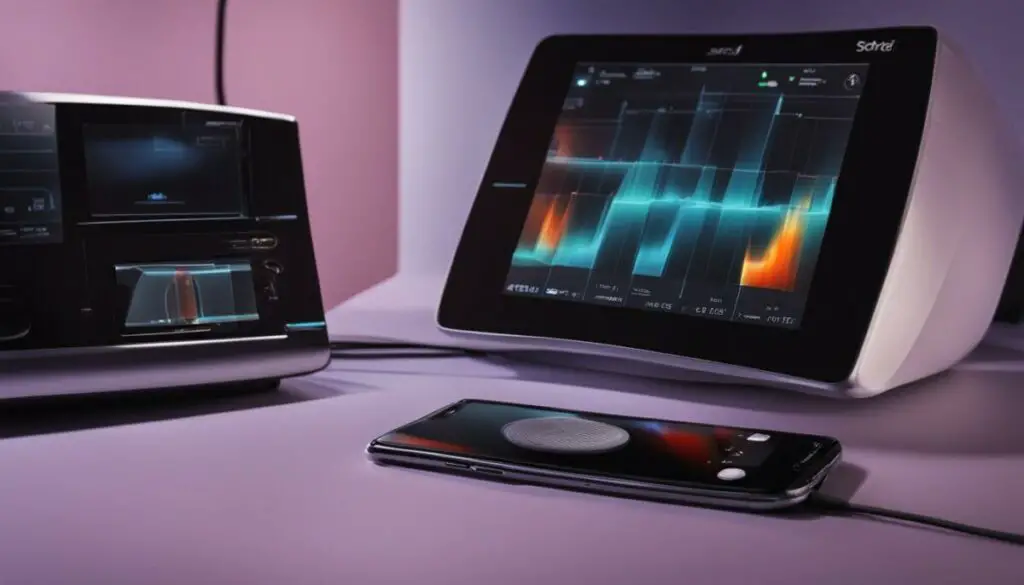
An infrared port on your phone opens up a world of possibilities beyond just transferring files to another device. With the right tools and software, you can enhance the functionality of your phone and transform it into a powerful remote control for various appliances.
One of the most practical uses of an infrared port on a phone is to control home appliances like TVs, air conditioners, and even lights. Many manufacturers offer companion apps that let you easily program your phone to communicate with these devices, allowing for seamless and convenient control from the palm of your hand.
Smart Homes Made Easy
The rise of smart home technology has made it possible to control almost every aspect of your home with your phone. Many of these devices use infrared technology to communicate, making your phone’s infrared port an essential tool for smart home enthusiasts.
Whether you want to turn your lights on and off, adjust your thermostat, or set your coffee maker to start brewing before you even get out of bed, an infrared-enabled phone can help you achieve it all.
Interacting with Other Infrared-Enabled Electronics
In addition to controlling home appliances, an infrared port on your phone can also help you interact with other electronics that use infrared technology. For example, you can use it to control your camera’s shutter or to remotely trigger a presentation on a projector.
Infrared also offers a secure and fast way to transmit data between devices. With the right software, you can use your phone’s infrared port to share files, contacts, and even connect to the internet through infrared-enabled routers.
Limitless Possibilities
The possibilities of an infrared port on your phone are truly endless. With a little creativity and the right tools, you can use it to control your car stereo, adjust the lighting on your gaming PC, and so much more.
So why limit yourself to just transferring files when your phone’s infrared port can do so much more? Unlock its full potential and take control of your world with the help of this powerful technology.
The Future of Infrared Technology in Phones
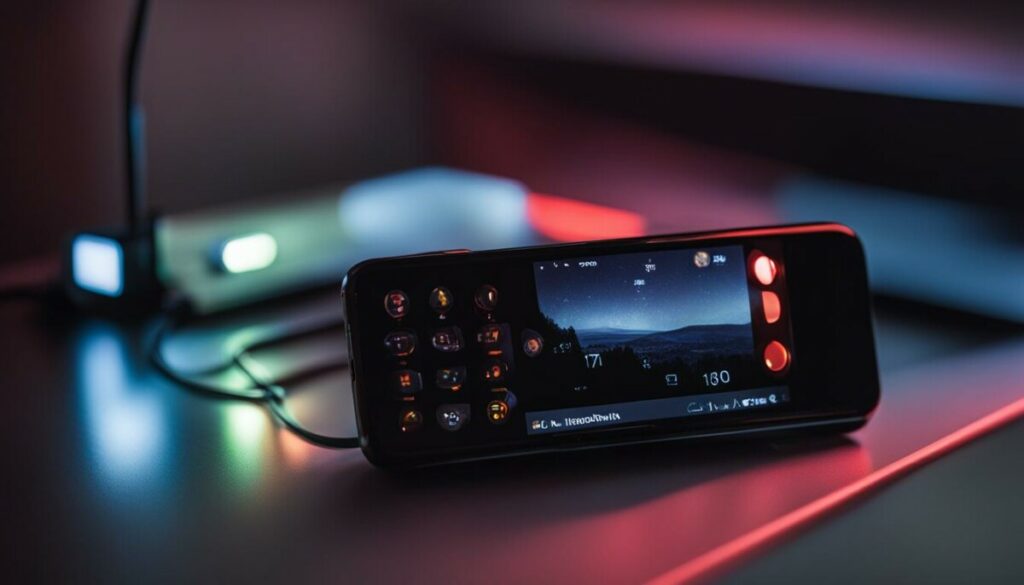
As smartphone technology continues to advance, we can expect to see even more innovative uses of infrared technology in phones. With the increasing popularity of smart homes, infrared ports on phones may become even more critical as users seek to control their home appliances via their phones.
Another exciting possibility is the integration of augmented reality (AR) into smartphone cameras. Infrared technology can play a significant role in improving AR applications by providing more accurate depth sensing and tracking capabilities. This can open up new doors for entertainment and gaming experiences, as well as improving industrial and medical applications of AR.
Additionally, as 5G networks continue to roll out, we can expect infrared technology to be used in conjunction with it, enabling faster and more reliable data transfer between devices.
Overall, infrared technology in phones is positioned to play an even more significant role in the future of smartphone connectivity and communication. As developers continue to innovate and push the boundaries of what is possible, we can only expect to see even more exciting and practical applications of this technology.
Examples of Infrared Technology in Future Phones:
| Application | Description |
|---|---|
| Smart home control | Users will be able to control their home appliances, including air conditioning, lighting, and security systems, via their infrared-enabled phones. |
| AR applications | Infrared technology will provide more accurate depth sensing and tracking capabilities, improving the overall experience of AR apps. |
| 5G data transfer | Infrared technology will be used in conjunction with 5G networks, enabling faster and more reliable data transfer between devices. |
Harnessing the Power of Infrared: Tips and Tricks
Now that you know what an infrared port on a phone is and its various uses, it’s time to explore some tips and tricks for making the most of this technology.
Troubleshooting Common Issues
If you’re having trouble connecting to another infrared device, make sure both devices are within range and that there are no obstructions blocking the signal. Additionally, check that both devices are correctly aligned and that the infrared ports are not covered by phone cases or other accessories.
Remote Control Functions
One of the most exciting uses of an infrared port is its ability to turn your phone into a remote control for various electronic devices. Use your phone to control your TV, AC, and other compatible appliances by downloading and configuring the appropriate apps.
Transferring Files
Infrared is a quick and easy way to transfer files between two compatible devices. Simply enable the infrared port on both devices, align the ports and transfer your desired files, whether it’s photos, music or documents.
Pairing with Smart Home Devices
With the increasing popularity of smart home devices, an infrared port on a phone can enable easy control of these devices without the need for separate remote controls. Simply download the relevant app and pair with your smart home devices. From there, you can control your lights, security systems, and more, all from the convenience of your phone.
Utilizing Lesser-Known Features
Did you know that you can use your phone’s infrared port to detect counterfeit money? There are also apps available that use infrared to analyze the temperature of different objects, which can come in handy for cooking or DIY projects.
Customizing Your Settings
Don’t forget to customize your infrared settings to best suit your needs. From adjusting the signal strength to enabling or disabling specific functions, taking the time to personalize your settings can significantly enhance your infrared experience.
Conclusion
As we’ve seen throughout this article, the infrared port on your phone is a valuable tool that can enhance your user experience and enable seamless connectivity with other devices. By understanding what an infrared port is and how it works, you can take advantage of its many benefits, from controlling smart home devices to transferring files.
While it may not be as popular as Bluetooth or Wi-Fi, the infrared port offers unique advantages, such as its ability to work in low-light conditions and its minimal power consumption. In the future, we can expect to see even more advancements and innovations in infrared technology, further expanding the possibilities for phone connectivity.
Harnessing the Power of Infrared: Tips and Tricks
To make the most of your phone’s infrared port, here are a few tips and tricks:
- Ensure that your phone and the device you want to control are aligned properly and within range of each other.
- Experiment with different apps and software that enable infrared communication, such as remote control apps or file transfer software.
- Try using your phone’s infrared port to control a variety of devices, such as TVs, air conditioners, and other appliances.
- If you encounter any issues with your phone’s infrared port, check that it’s enabled in your phone’s settings and try restarting both devices.
By following these tips and exploring the possibilities of your phone’s infrared port, you can fully harness its power and enjoy a more seamless and connected experience.
FAQ
What is an infrared port on a phone?
An infrared port on a phone is a hardware component that allows the device to communicate with other infrared-enabled devices, such as TVs, air conditioners, and other electronic appliances.
How does an infrared port work?
An infrared port on a phone works by emitting and receiving infrared light signals. These signals carry information that can be used to control and interact with other infrared devices.
What are the benefits of having an infrared port on a phone?
Having an infrared port on a phone allows for convenient remote control of various household appliances, seamless file transfer between devices, and compatibility with a wide range of infrared-enabled devices.
How is infrared technology incorporated into phones?
Infrared technology is incorporated into phones through the inclusion of specialized hardware, such as infrared transmitters and receivers, that enable the communication and data transfer capabilities.
What are some practical uses of an infrared port on a phone?
An infrared port on a phone can be used for controlling TVs, set-top boxes, DVD players, and other home appliances, as well as for sharing files between phones or with other devices that support infrared communication.
How does an infrared port compare to Bluetooth technology?
While both technologies enable wireless communication, an infrared port has a more limited range and requires direct line-of-sight between devices, whereas Bluetooth has a larger range and can connect devices without line-of-sight.
How does an infrared port differ from Wi-Fi?
An infrared port is primarily used for short-range communication and requires line-of-sight, whereas Wi-Fi provides wireless internet connectivity over longer distances and can be used without direct line-of-sight.
How has infrared communication evolved on smartphones?
Infrared communication on smartphones has evolved from its early use in TV remote control apps to more advanced capabilities, such as controlling smart home devices and integrating with other infrared-enabled electronics.
What can you do with an infrared port on your phone?
With an infrared port on your phone, you can control your TV, air conditioner, and other appliances, transfer files between phones, use your phone as a remote control, and even interact with infrared-enabled toys and gadgets.
What does the future hold for infrared technology in phones?
The future of infrared technology in phones may bring advancements in range, compatibility, and integration with other wireless technologies, further expanding the possibilities for seamless connectivity and device control.
What tips and tricks can help maximize the use of an infrared port on a phone?
To make the most of your phone’s infrared port, ensure clear line-of-sight between devices, keep your infrared database updated for better remote control functionality, and explore third-party apps that offer additional features and compatibility.

